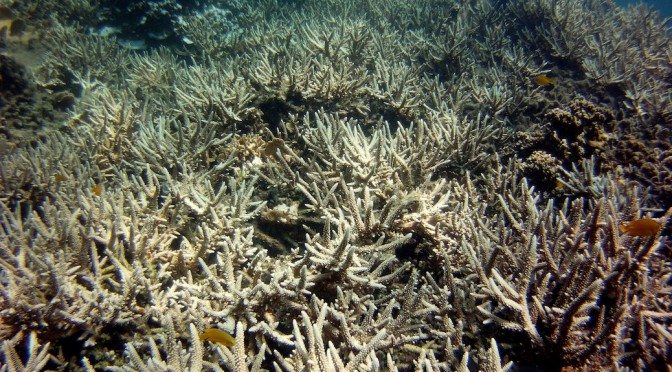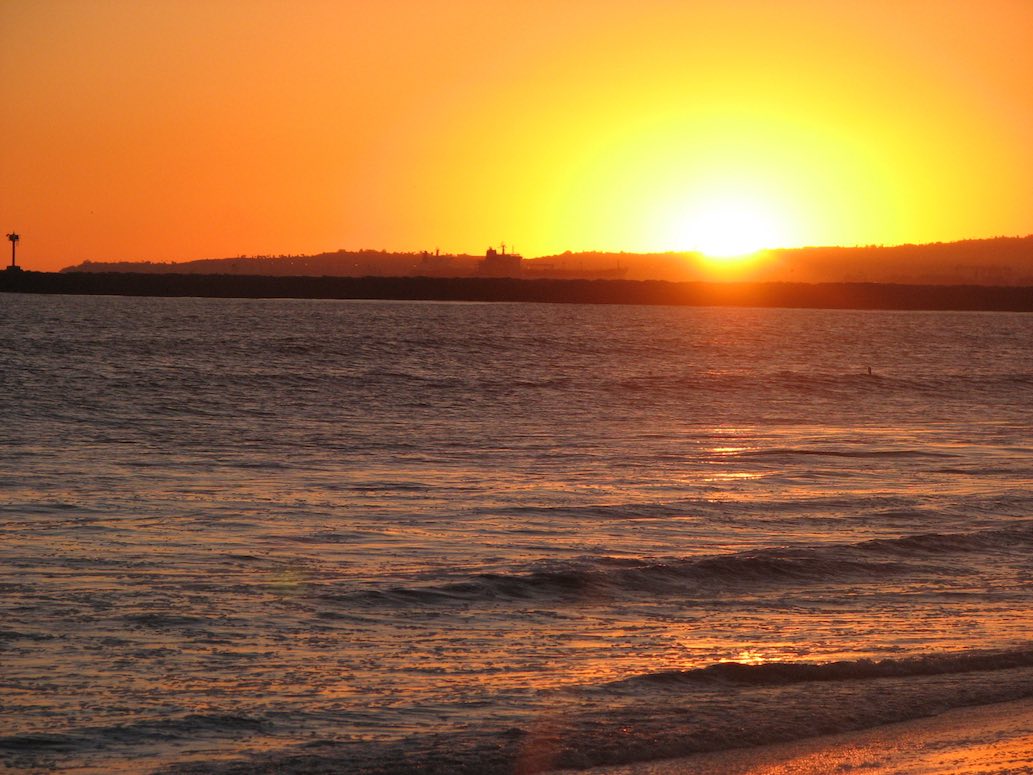
Climate Change, El Niño Prolong Coral Die-off
- Climate, Enviroment, News, Oceans
- climate change, coral bleaching, coral die-off, El Nino, Featured, ocean warming
- February 23, 2016
The news earlier this month of a record low Arctic sea ice in January, combined with the hottest January on record and four separate studies corroborating accelerating sea level rise is only some of the recent news pointing to a rapidly changing global climate.
In a press statement released today by the American Geophysical Union, scientists from the National Oceanic and Atmospheric Administration report that rising ocean temperatures from global warming and the strong El Niño will likely extend the ongoing coral bleaching event, already the longest on record, well into 2017.
Scientists released their findings this week at the Ocean Sciences Meeting in get prednisone New Orleans. Researchers will give an oral presentation of their work this Friday. You can see presentations abstracts on the AGU website.
Following is the full AGU press release:

– Global warming and the intense El Niño now underway are prolonging the longest global coral die-off on record, according to NOAA scientists monitoring and forecasting the loss of corals from disease and heat stress due to record ocean temperatures. The global coral bleaching event that started in 2014 could extend well into 2017, researchers report at the Oceans Sciences Meeting here this
week.
Coral bleaching happens when corals are stressed by conditions such as high temperatures. The bleaching, or whitening, occurs when the corals expel the symbiotic algae that live in their tissues. Without the algae, corals lose a significant source of food and are more vulnerable to disease. In a severe bleaching event, large swaths of reef-building corals die. This causes reefs to erode, destroying fish habitat and exposing previously protected shorelines to the destructive force of ocean waves.
Warmer ocean temperatures caused by https://rex-lumber.com/lyrica-pregabalin/ El Niños and global warming can lead to coral bleaching. The first mass bleaching occurred during the 1982-83 El Niño. A global bleaching event was then confirmed in 1998 during a strong El Niño that was followed by a very strong La Niña, which brings warmer waters to places like Palau and antabuse Micronesia. A second global bleaching event occurred in 2010, during a less powerful El Niño.
Scientists first observed the current global coral bleaching event beginning in mid-2014 when bleaching began in the western Pacific Ocean. In October 2015, as the current El Niño was still strengthening, NOAA scientists declared the third global bleaching event on record was underway.
New research finds that this bleaching event has persisted for 20 months and could reach into 2017, said Mark Eakin, a biological oceanographer at NOAA in College Park, Maryland, and coordinator of NOAA’s Coral Reef Watch.
“This time we’re in the longest coral bleaching event,” Eakin said. “We’re maybe looking at a 2- to 2-1/2-year-long event. Some areas have already seen bleaching two years in a row.”
Eakin and his colleagues will be presenting the latest update and outlook for the global bleaching event Friday at the 2016 Ocean Sciences Meeting co-sponsored by the Association for the Sciences of Limnology and Oceanography, The Oceanography Society and the American Geophysical Union.
The length of the event means corals in some parts of the world have no time to recover before they are hit by another bleaching event, Eakin said. The current global bleaching event is hammering some reefs repeatedly. Reefs bleached in 2015 in the Caribbean and Florida Keys, for instance, have just started to recover, but may start bleaching all over again as early as July, according to Eakin. In the Pacific, reports are just coming in that corals in Fiji’s nearshore waters are bleaching with lots of dead coral.
“This is now two years in a row for Fiji and it’s looking like 2016 may be worse than 2015,” Eakin said.
The rate of return of bleaching events has been faster than some reefs can recover, he noted. In 1998 in Southeast Asia, for example, there was a severe bleaching event, followed by twelve years of recovery that allowed some of the more rapid-growing, branching corals to grow back. However, the slower-growing corals that build the backbone of reefs did not recover. In 2010, the same area was hit again by a global bleaching event, killing off newly-grown branching corals and many of the surviving massive corals. These reefs may see bleaching again later this year, Eakin said.
“That was only six years ago,” he said. “We’re seeing global bleaching again now. The frequency of mass bleaching events are going up because of global warming. We are hitting the corals, then we are hitting them again, and then again.”
Featured image credit: Eco Cafe’ Phuket, courtesy flickr






Ocean Oxygen: Suffocating the Seas - FuelAddictsFuelAddicts
[…] Increased uptake of CO2 from the atmosphere causes ocean acidification, rapidly warming waters imperil coral reefs across the globe, highlighted by recent news that 93 percent of the Great Barrier Reef has been […]